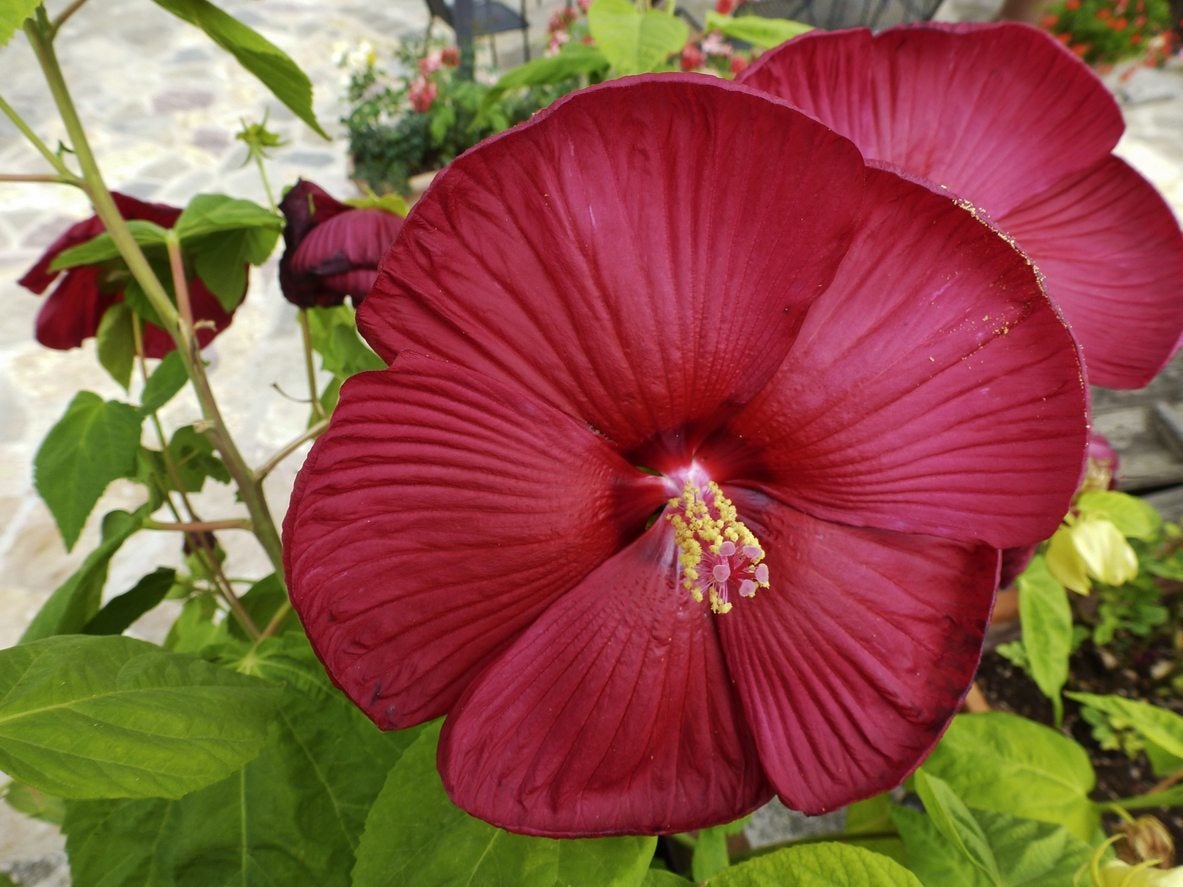Pruning Perennial Hibiscus – A Guide To Hardy Hibiscus Pruning


Commonly known as hardy hibiscus, perennial hibiscus may look delicate, but this tough plant produces huge, exotic-looking flowers that rival those of tropical hibiscus. However, unlike tropical hibiscus, hardy hibiscus is suitable for planting as far north as USDA plant hardiness zone 4, with very little winter protection.
When it comes to pruning perennial hibiscus, there’s no need for stress. Although this easy-care plant requires very little pruning, regular maintenance will keep it healthy and promote better, bigger flowers. Read on to learn how and when to prune perennial hibiscus.
How to Prune a Perennial Hibiscus
Hardy hibiscus pruning isn’t complicated but there are a few things you should know in order to keep the plant looking its best.
Cut any dead stems or branches down to about 8 to 12 inches (20-30 cm.) in fall, just before applying a protective cover of mulch. Remove the mulch in spring, when you’re sure there’s no danger of hard freezes. If any branches froze during the winter, cut these to the ground.
When new growth appears, you can trim and shape the plant, as desired. Keep in mind that perennial hibiscus is a slow starter, so don’t worry if no growth is present in early spring. It may take a string of warm days before the plant decides to emerge.
Pinch back growing tips with your fingers when the plant reaches a height of about 6 inches (15 cm.). Pinching will encourage the plant to branch out, which means a bushier plant with more blooms.
Don’t wait too long, as flowers bloom on new growth and pinching too late may delay flowering. However, you can pinch the plant’s growing tips again at 10 to 12 inches (25-30 cm.) if growth appears spindly or thin.
Sign up for the Gardening Know How newsletter today and receive a free copy of our e-book "How to Grow Delicious Tomatoes".
Deadhead wilted blooms throughout the season to keep the plant neat and to encourage a longer blooming period. To deadhead, simply pinch the old blooms with your fingernails, or snip them with pruners.
Some types of perennial hibiscus can be rambunctious self-seeders. If this is a concern, be vigilant about deadheading old blooms, which will prevent the plant from setting seed.

A Credentialed Garden Writer, Mary H. Dyer was with Gardening Know How in the very beginning, publishing articles as early as 2007.